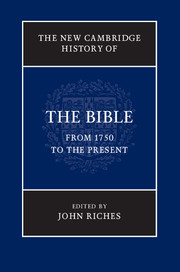
- Cited by 3
-
Cited byCrossref Citations
This Book has been cited by the following publications. This list is generated based on data provided by Crossref.
Davis, Stacy 2021. Unapologetic Apologetics: Julius Wellhausen, Anti-Judaism, and Hebrew Bible Scholarship. Religions, Vol. 12, Issue. 8, p. 560.
Schmidt, Thomas 2021. The Book of Revelation and its Eastern Commentators.
Ska, Jean-Louis 2022. The Cambridge Companion to Genesis. p. 11.
- Publisher:
- Cambridge University Press
- Online publication date:
- June 2015
- Print publication year:
- 2015
- Online ISBN:
- 9780511842870
- Collection:
- Cambridge Histories - Religion


